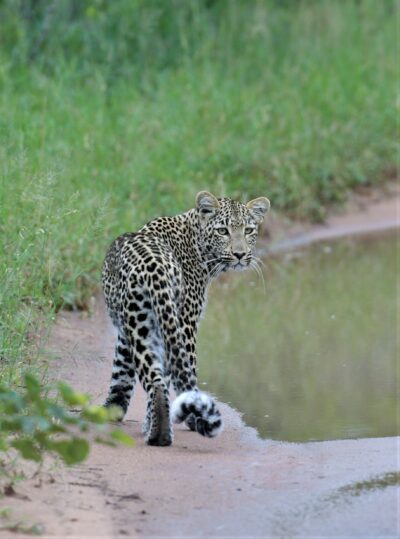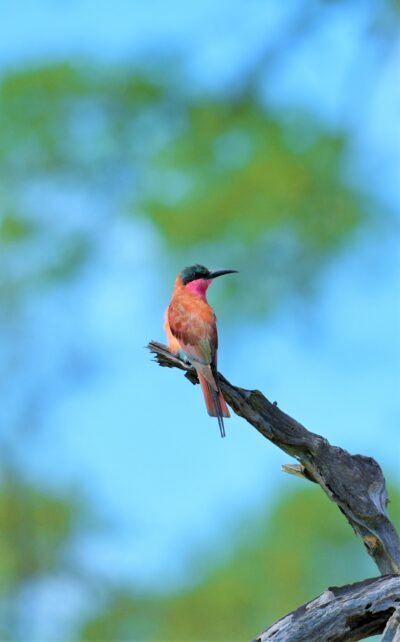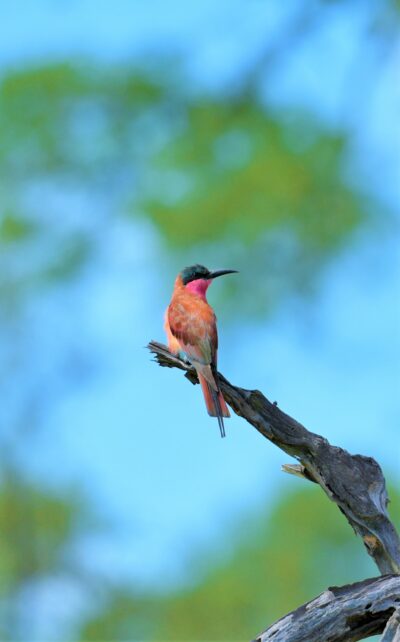
We have seen new records set this year in the lowveld. Heavy rains in February surpassed the annual flood markers for the rainy season, which is both a blessing and a curse. Having surplus water as the rivers and wildlife always need it, but flooding also causes much destruction to the parks and communities.
That said, it has been incredible to witness the storms and pelting rains and it certainly has changed things up for a few months in the bush, so I have to report this autumn will be starting off wetter, muddier and greener with crocodiles lurking around for the after party just as the grasses remain tall a while longer. The cool temperatures are already setting in though since the start of March, as is the dip in light.


I’m happy to report the Land Cruiser Electric Vehicles we have, have got us out of more than one or two muddy situations over the rainy season. Nothing like an adventure while out in the wild.
This year our autumn season will focus on the smaller creatures. Frogs as you may know are indicators of climate and seasonal change, so as the biodiversity changes with bugs and flies dying off in the cooler weather, the frogs and toads begin to hibernate as they experience food shortages. For our guests it means there will be less of a noisy choir practice around ponds and puddles…yielding to the great silence and starry night of the bush which we love to take in while on safari.
Birds also start to migrate to chase food sources and light, and as a result go back to the northern warmer regions of Africa during our winter months.


Dung beetles bury themselves underground and hibernate until the next summer period, as do scorpions and other insects, as well as, snakes that settle in their burrows or caves.
Speaking of snakes, they in particular are interesting as they are cold blooded animals. They metabolise with light energy. So as their food processing slows down this results in them being less active and only move when temperatures allow them. In most cases they are seen baking in the sun during the hottest part of the day. It the season where we are going to see more snakes stationary either in trees or abandoned termites mounds. The good news it is a marvel to witness Snake Eagles hunting snakes like Black Mambas at this time. The eagles have evolved to hunt on snakes, venomous or not and they will take any diurnal snake and macerate them for food. Seeing such interaction on safari is always wonderful, you don’t really want to miss it!
Still waters are deep enough for those crocs I mentioned… they are well positioned in murky and muddy ponds and smile on their generally successful hunts at this time. Apart from having one up on catfish as the ponds dry out, they will also start to have a lot of visitors around their watering holes as the bush dries out. Impala, zebra, wildebeest as well as buffalos will be around watering holes daily.
With all the water in our ecosystem during this period, all kinds of fish also went upstream and will be trapped in small pools, unable to return to the main rivers or dams. This grants another eating frenzy opportunity to animals like leopards and other fish-eating birds such as storks and kingfishers.
It’s a feast for any safari- goers eyes!
Golden Orb-web spiders and other orb-web weavers will start making their webs from April, they trap grasshoppers and others remaining flying insects. Ground spiders like Baboon Spiders will start appearing as well, as the ground gets colder. This will also call upon the presence of Spider Hunting Wasps, which specialise in hunting down the Baboon Spiders. These wasps are well known for paralysing spiders of their choice and burying them alive, preserving them for their offspring.
Termites will start repairing their mounds and extending their ventilation shaft. Because the sunlight intensity will be lower, and the sun will mostly shine on the northern parts of the mound, the worker termites will put more stones on the northern face of the mound. This is a fascinating phenomenon as it causes the mound to bend towards the north.
As bush navigators, we are able to identify where north is, guided by the shape of the termite mound shaft. Historically most of the native african people used the sun and the moon as well as other prominent stars and planets to navigate due north, together with the help of these termite mounds. Of course, those could only be used effectively under clear skies, it was not possible on cloudy days.
The cheetah plains will soon attract more grazing species and cats to the open. Cheetah always prefer these areas to attain their top chasing speed. It is the perfect place to sight animals in the morning and in the afternoon when the grasses dry out.

Autumn is another season for wild berries. In this case, the likes of Brown Ivory trees and Guarris will be attracting a lot of bird species. These plants are able to produce berries over the period of a three month span and will be highly popular with baboons and Monkeys too.
The berries from Brown Ivory trees are rather sweet and palatable. This is so because these trees are only found growing on termite mound soil, which is by far the most nutritious, organic soil out there! In case the termite mound is still active, the tree will also get moisture from the termite system, making the tree greener for longer. We expect to see most of the common fruit eating birds to be on such sites too.
The dynamics of nature are forever extraordinary and while we see habitual changes year on year – we experience the climatic effects, like the torrential rains in a different way and see how they mould and shape the next season. This time with abundance in the extreme.
We are out there every single day, yet we always encounter something new and totally different. Often even rare, as with a pangolin sighting we recently encountered.
Animals do move around and are always doing unique things out there. We are so lucky to find ourselves working in the environment like this, where everything is totally out of our control and left only for us to witness. It’s the privilege of the wild.
